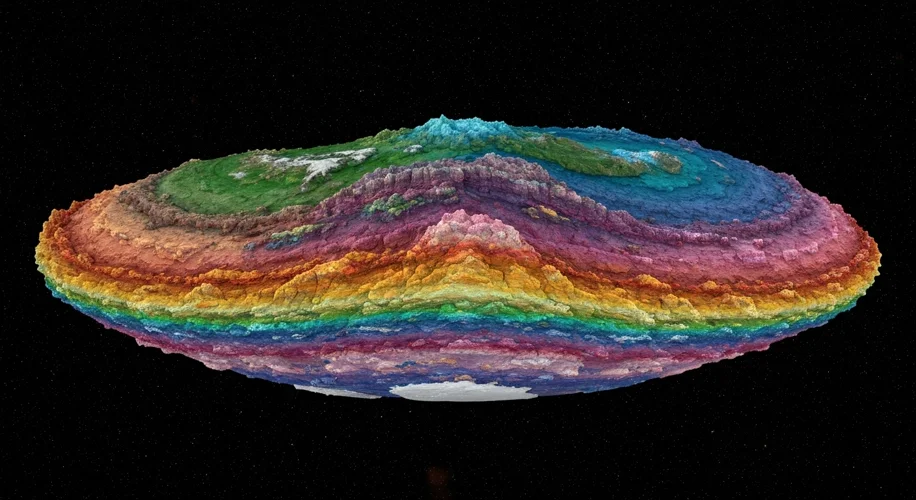Did you know that Earth’s deep past might be more ordered than we ever imagined? A recent study has uncovered a surprising mathematical pattern hidden within our planet’s history, suggesting that geological time isn’t just a linear sequence of events, but something far more intricate – a fractal.
For a long time, we’ve understood Earth’s history through layers. Think of sedimentary rocks stacked one on top of another, each layer telling a story of a different time. It’s like reading a book, chapter by chapter. But this new research, published in Nature Geoscience, suggests there’s a deeper, more complex structure at play.
The researchers analyzed geological data spanning billions of years, looking at everything from rock formations to climate shifts. What they found was a pattern that repeats itself at different scales. This is the essence of a fractal – a pattern that looks similar whether you’re looking at the whole thing or just a small part of it. Imagine a coastline: it looks jagged from space, and if you zoom in, it still looks jagged.
So, what does this mean for our understanding of Earth’s past? It implies that certain geological processes and events might be recurring in a way that’s governed by mathematical principles. It’s not just random chance; there could be an underlying order, a kind of cosmic rhythm to our planet’s evolution.
This discovery could help scientists refine their models of Earth’s history and even predict future geological events. It opens up new avenues for research, encouraging us to look for these fractal patterns in other areas of Earth science, too.
It’s pretty amazing to think that the story of our planet, written in rock and time, might also be a story told in numbers and patterns. It’s a powerful reminder of the interconnectedness of everything, from the smallest atomic particle to the grandest sweep of geological time. What else might be hidden in plain sight, waiting for us to discover its mathematical beauty?

